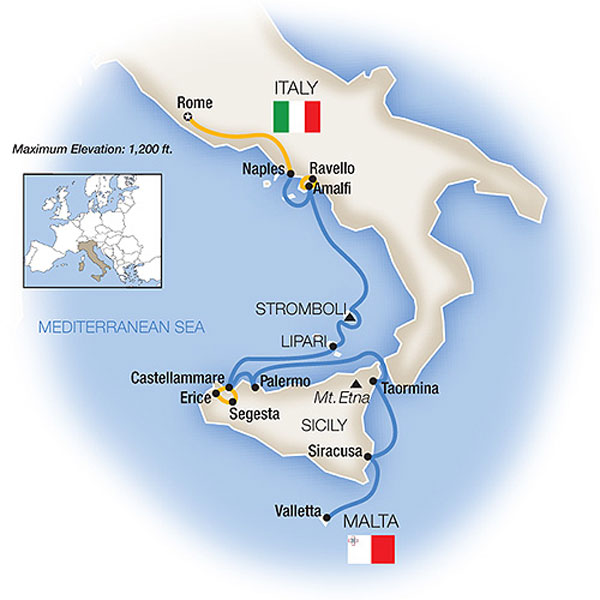
Sicily, the Amalfi Coast and Rome
Mike and Judy Henderson
September 18 - 28, 2018
I'm going to leave the map on each web page so you can see where we are.

+++++++++++++++++++++++++++++++++++++++++++++++++++++
9/19/2018 (Wednesday) Today was a very full day. It was raining in the morning but had stopped by the time we set out. St. Peter's Basilica was closed for a Papal function, so our departure from the hotel was a bit later than usual. But we toured until 10pm this evening.
We began with a bus tour of some major sites in Rome. We drove by the Victor Emmanuel II Monument, formally known as the Altare della Patria.
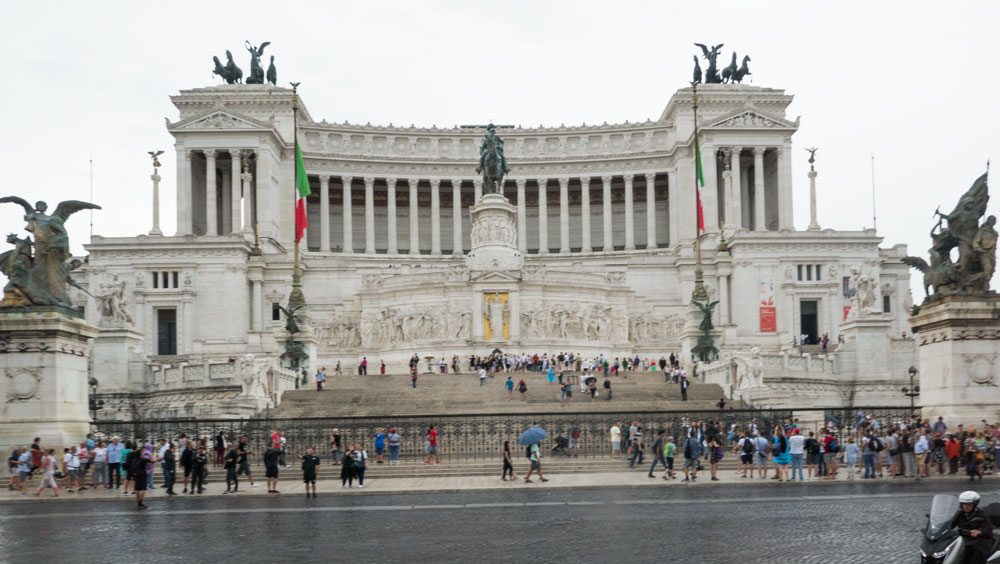
We drove by many "ruins" of ancient buildings, temples and monuments. I took pictures of many of them, but I don't remember the names the guide gave us. Here's one I thought was especially interesting. The ruins are on the bottom and people live in the apartments at the top. [Update and thanks to Nancy F. who identified the building] This is the Theatre of Marcellus.
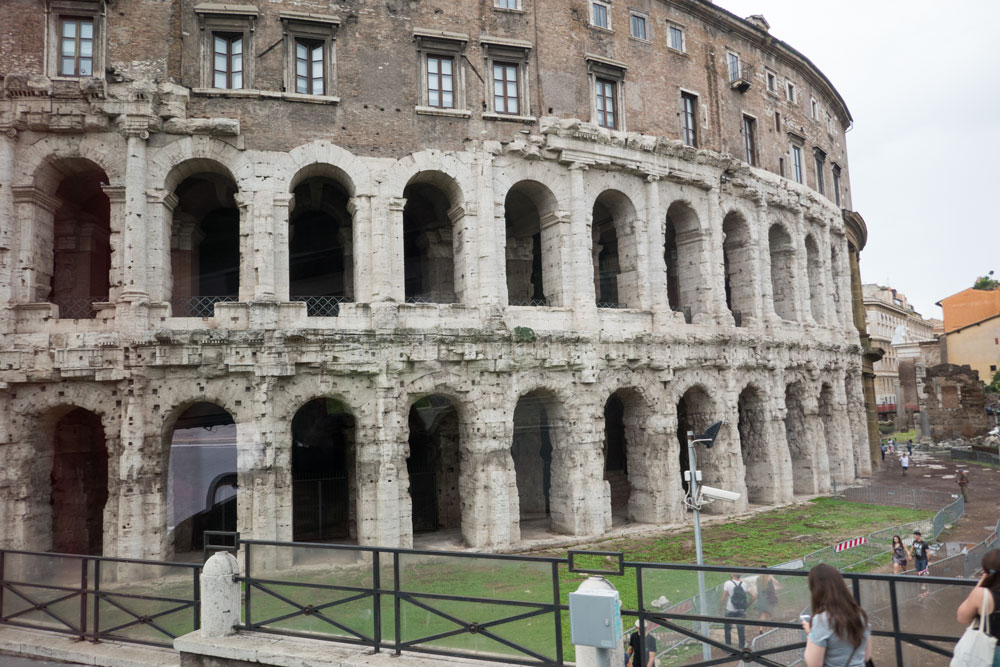
After touring by bus for a while, we stopped at the Basilica of St. Paul Outside the Walls. Here's a view of the Basilica as we approached it.
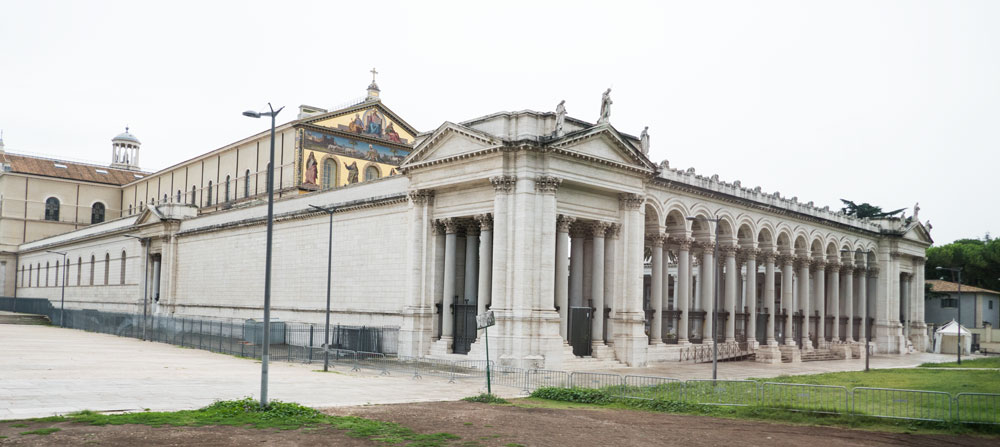
Beyond the colonnade is a small patio with a statue of St. Paul holding a sword. St. Paul was executed by decapitation and the sword may represent his martyrdom.
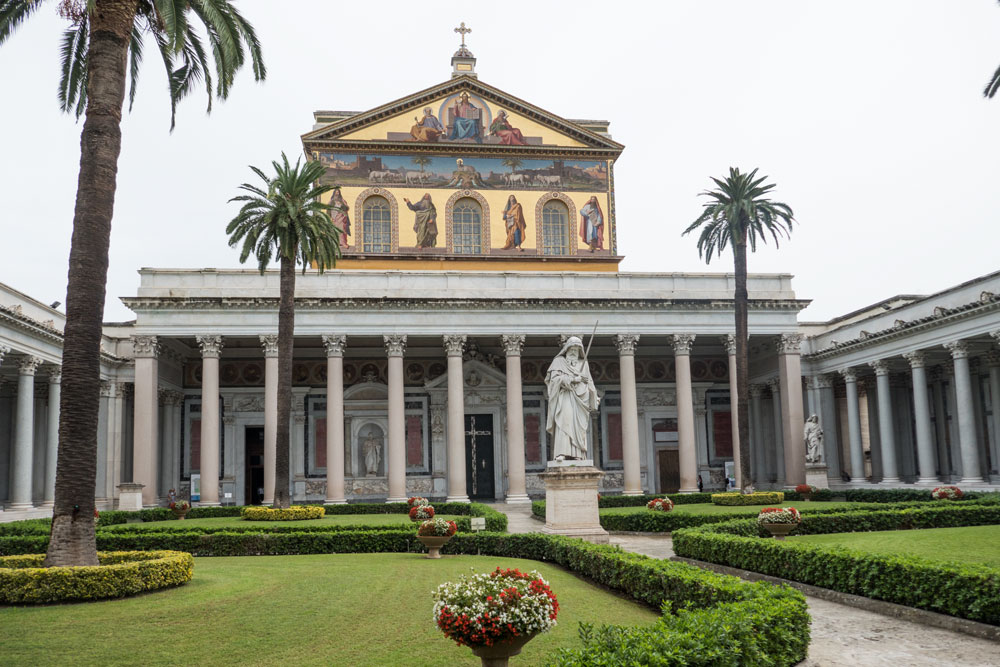
The really impressive thing about the basilica is it's size - it's 150 meters in length and 80 meters wide. This picture of the central colonnade (there are two more, one on either side of the central colonnade) doesn't really convey the size.
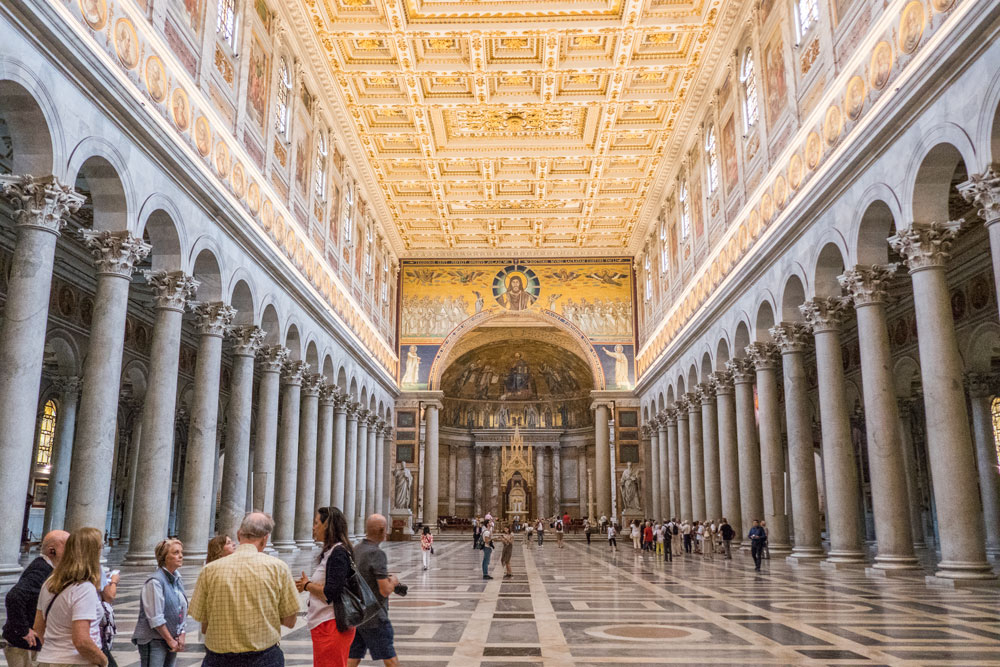
This shows the layout of the basilica.
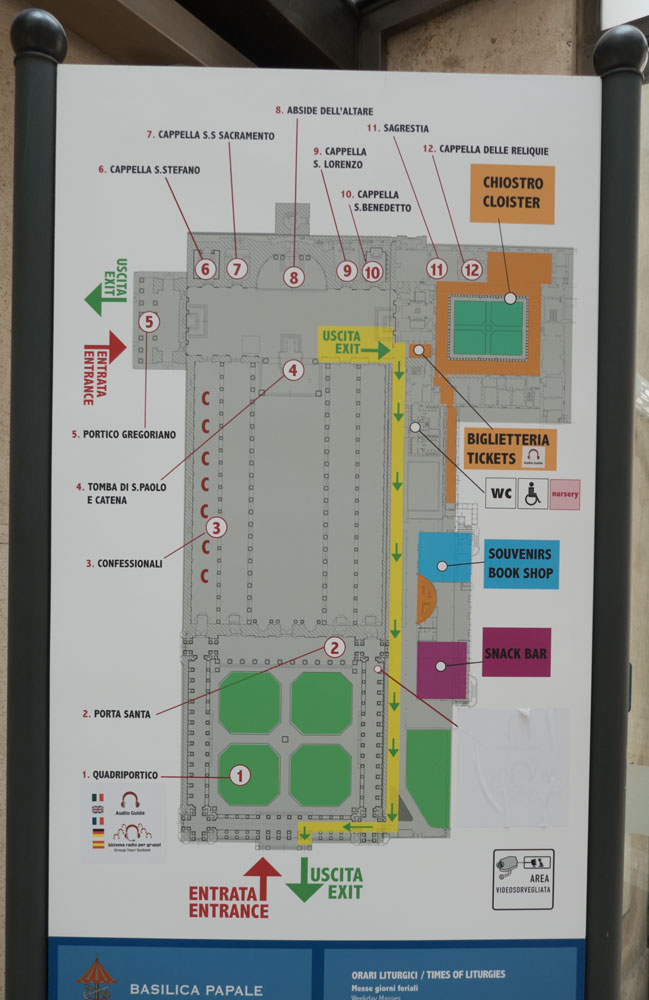
Here's a view of the altar area. It's in the area of the transept (two wings on the side of the altar).
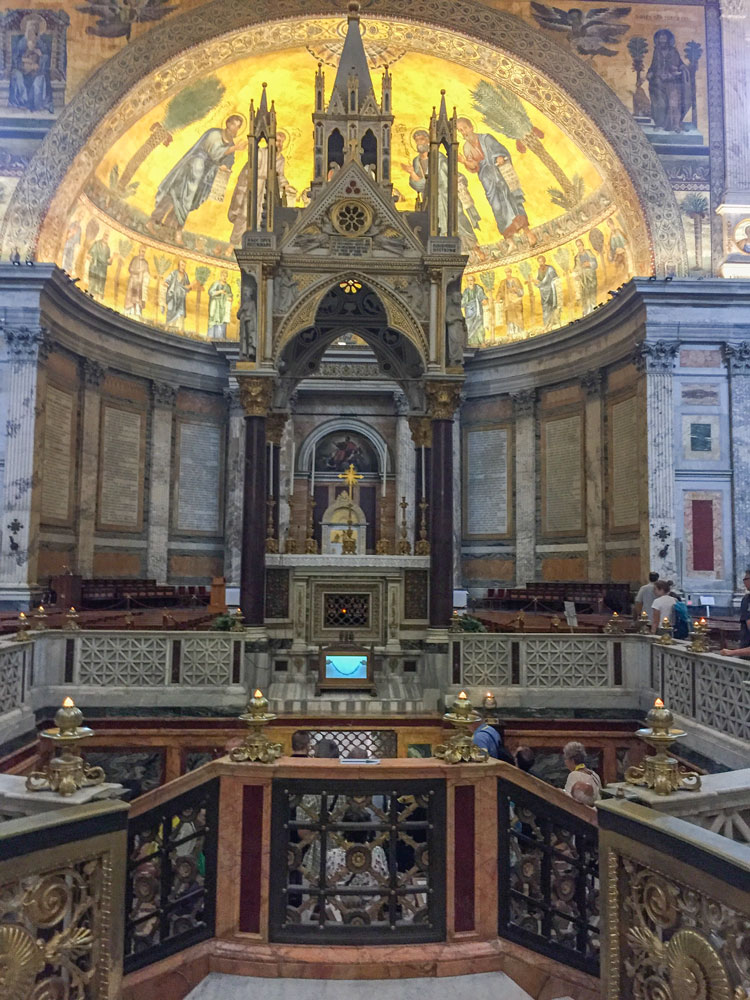
The basilica is reputed to be built over the tomb of St. Paul. Here's what they claim is the cover of St. Paul's tomb.
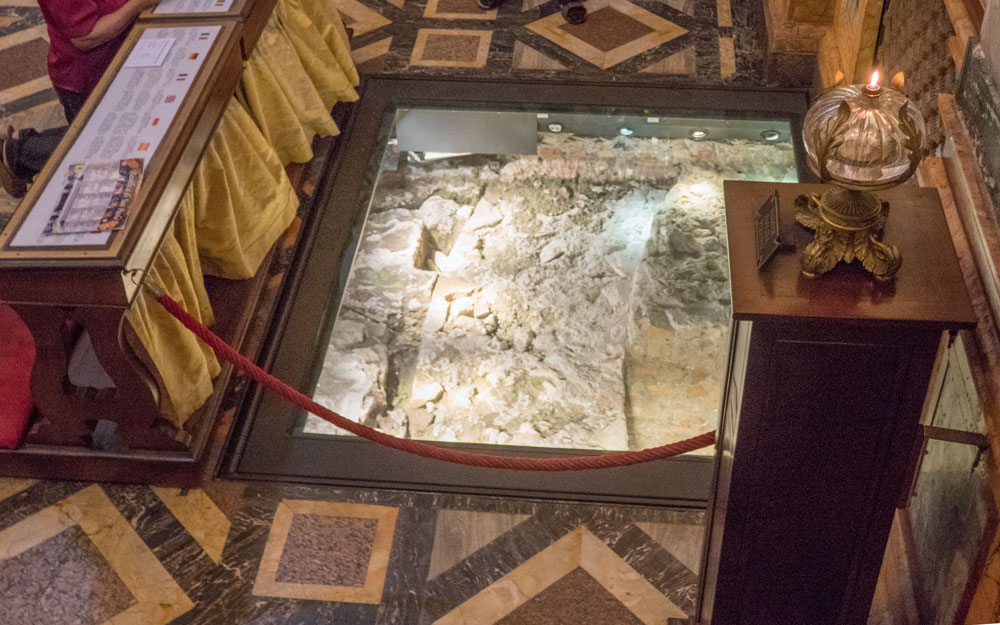
A close up of the altar area.
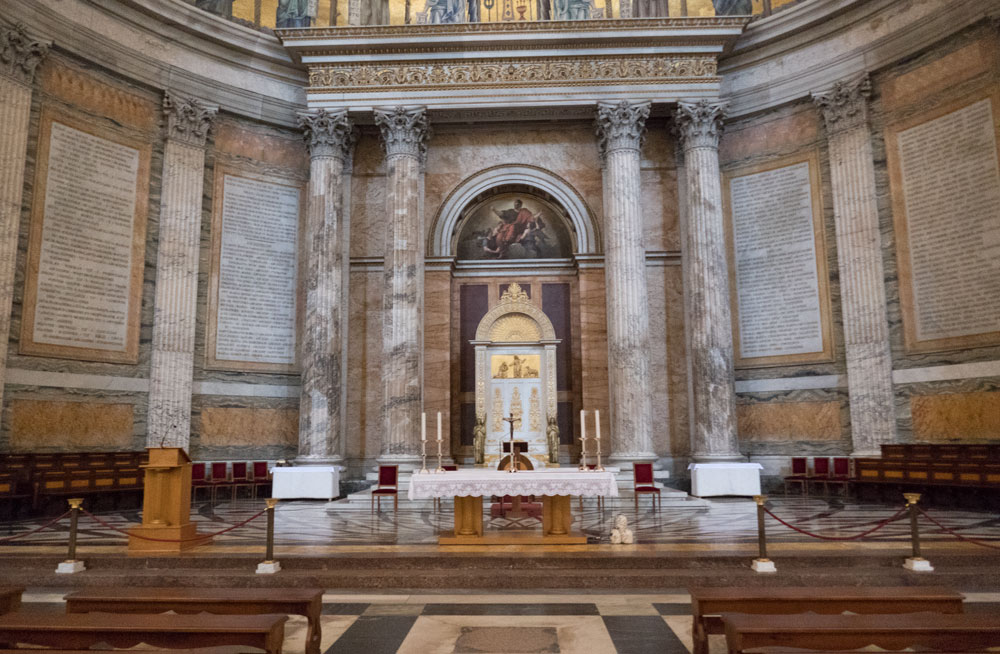
After leaving the basilica we went to a pizza restaurant for lunch. Very nice thin crust pizza.
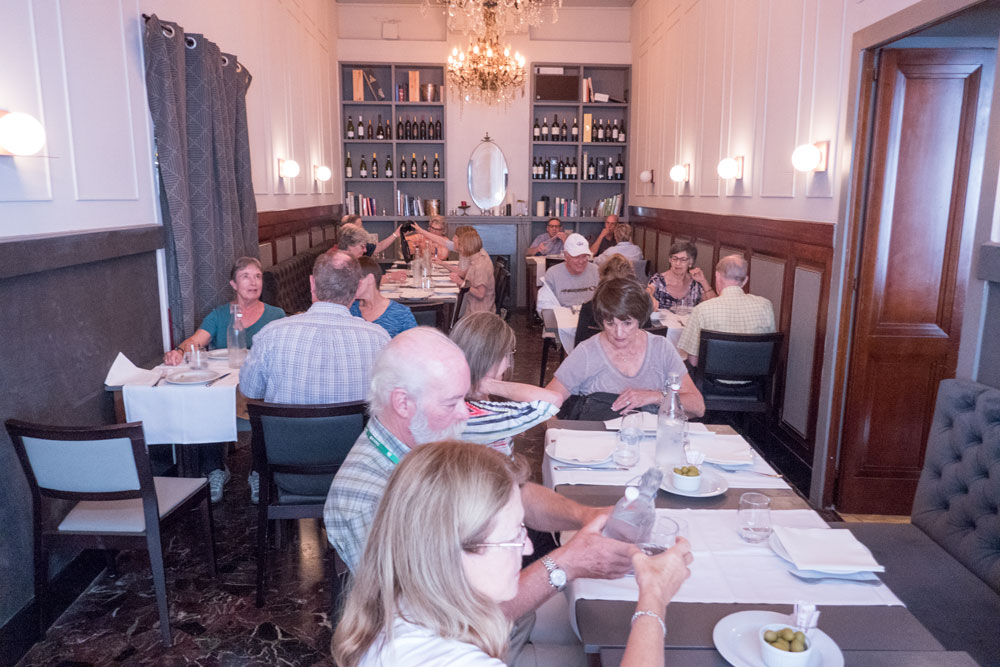
After lunch we headed to the Coliseum. The Coliseum was originally called the "Flavian Amphitheatre". After the Colossus of Nero was installed near the Amphitheatre, the Amphitheatre became known as the Colosseum. Even after the statue was destroyed the Amphitheatre retained the name "Colosseum".
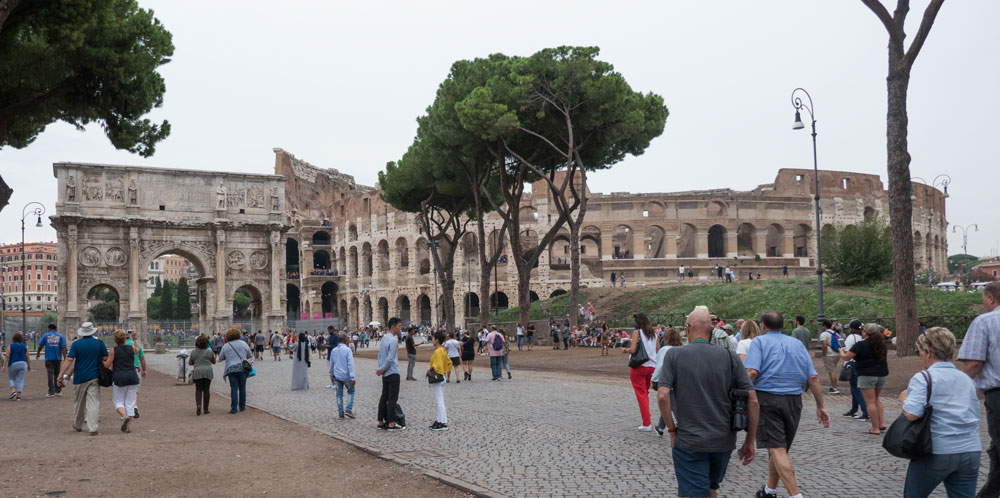
The Arch of Constantine is located on the approach to the Colosseum.
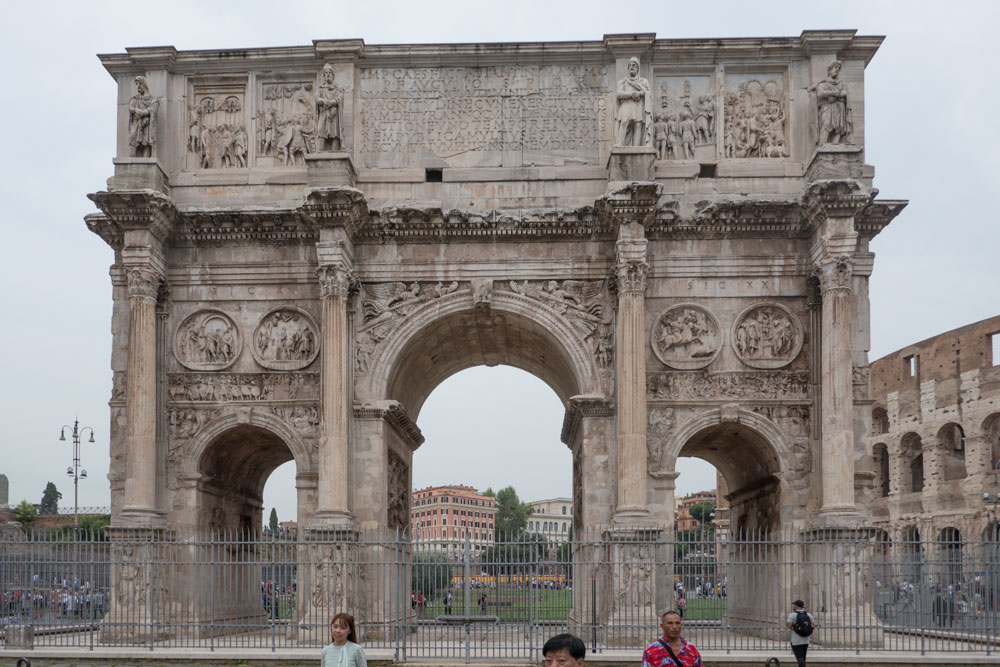
A view of the arena of the Colosseum from the middle deck.
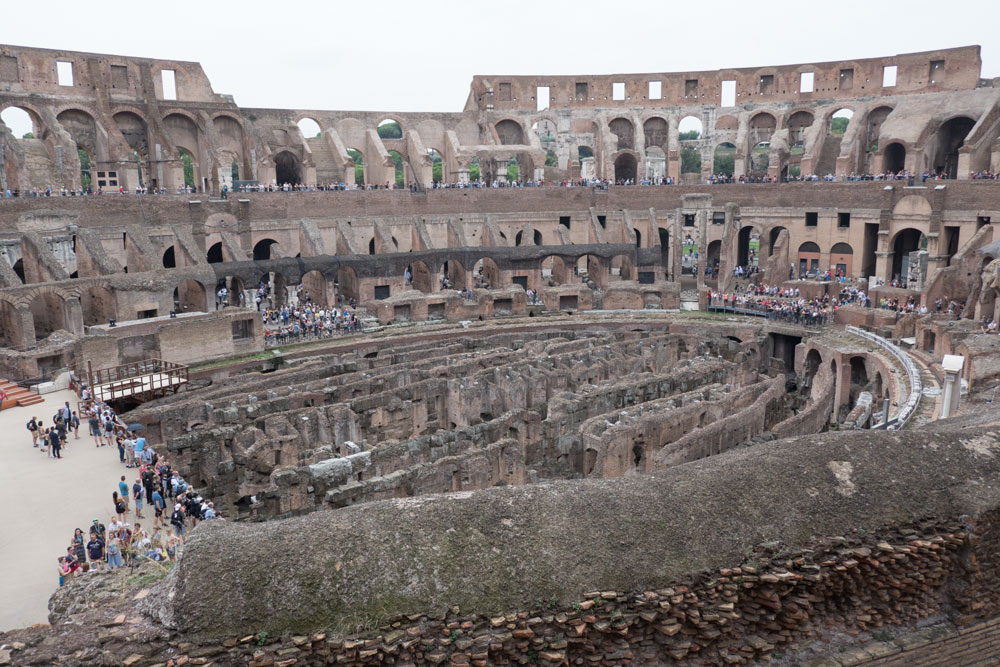
On the Velian hill, close to the Colosseum, are the ruins of the Temple of Venus and Roma.
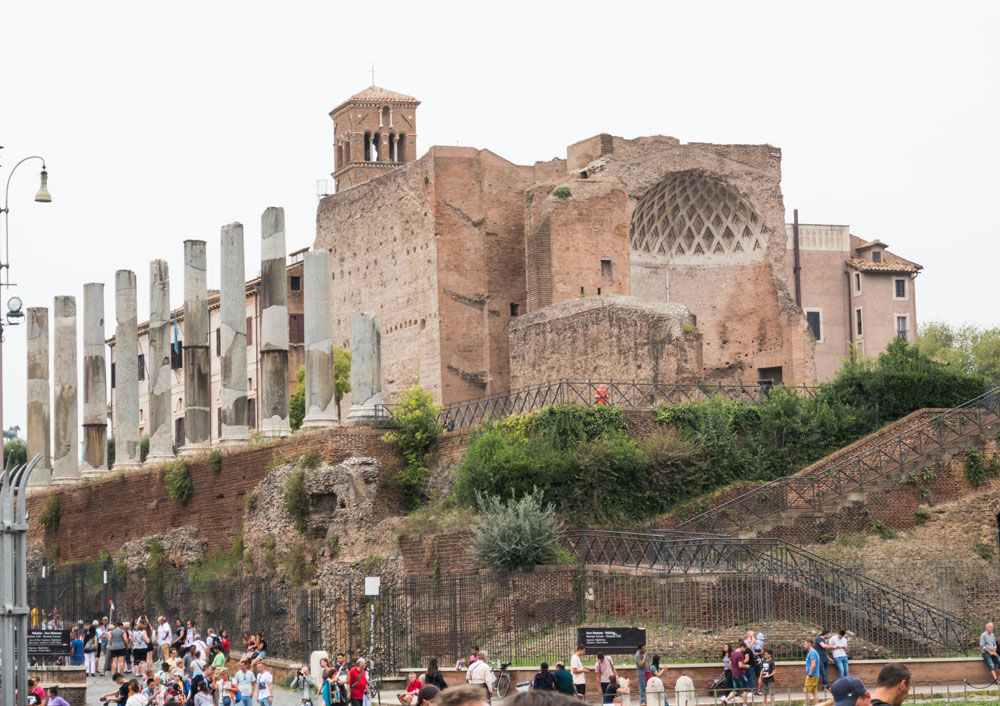
Then it was back to the hotel for a short rest before we left again at 6:30pm to visit the Vatican Museum and the Sistine Chapel.
The Vatican has a wall around some portion of it. The bus dropped us near the entrance, at the wall.
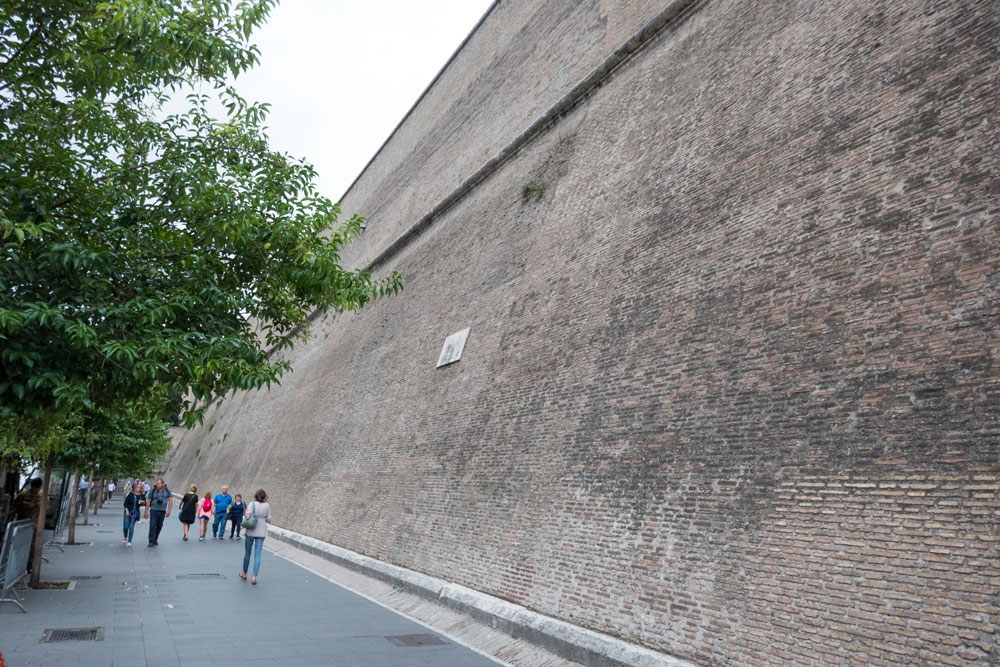
This is the old entrance to the Vatican Museum - it's now the exit.
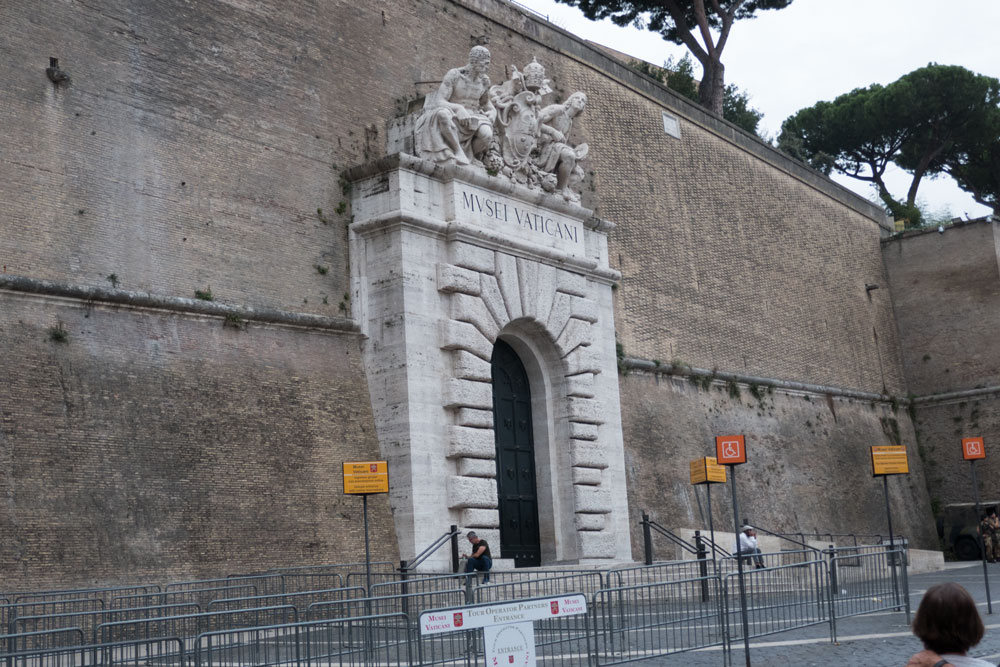
Eventually we entered and passed through the screening. Tauck had arranged an after-hours tour and we were the only group in the museum! The experience is very different when you're with a small group than if you're fighting the usual crowd. And our tour guide was excellent. She had an amazing amount of knowledge about the collection and the building, and she was easy to understand (very little accent). If you ever have the chance to do an "after hours" visit to the Vatican Museum, I suggest you jump at it. It's something I'll remember for a long time.

From the museum we could see the dome of St. Peter's Basilica. Unfortunately we were not able to visit St. Peter's.
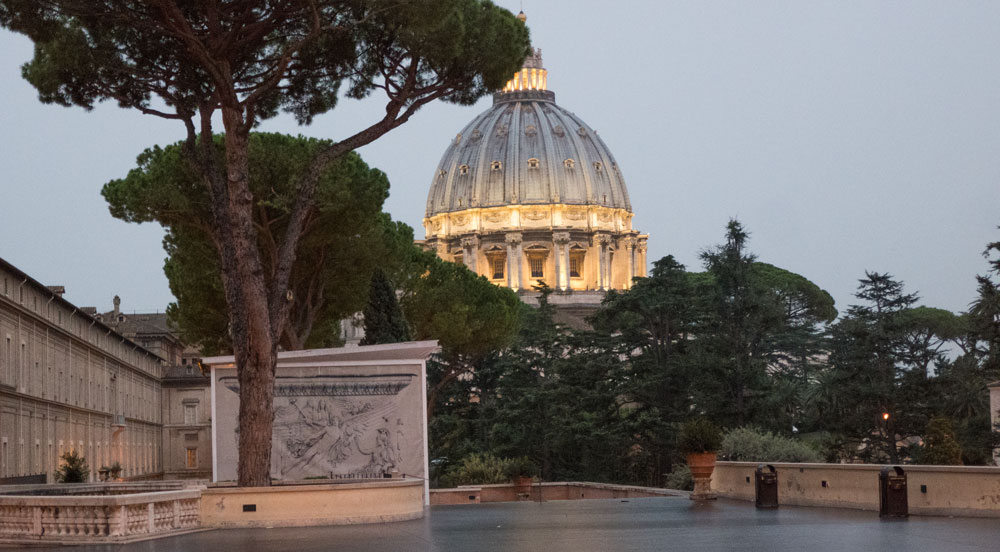
I can only show a small part of what we saw in the museum - but I'll try to give you a taste. Flash photography was not permitted so all of the pictures in the Vatican Museum are taken with available light.
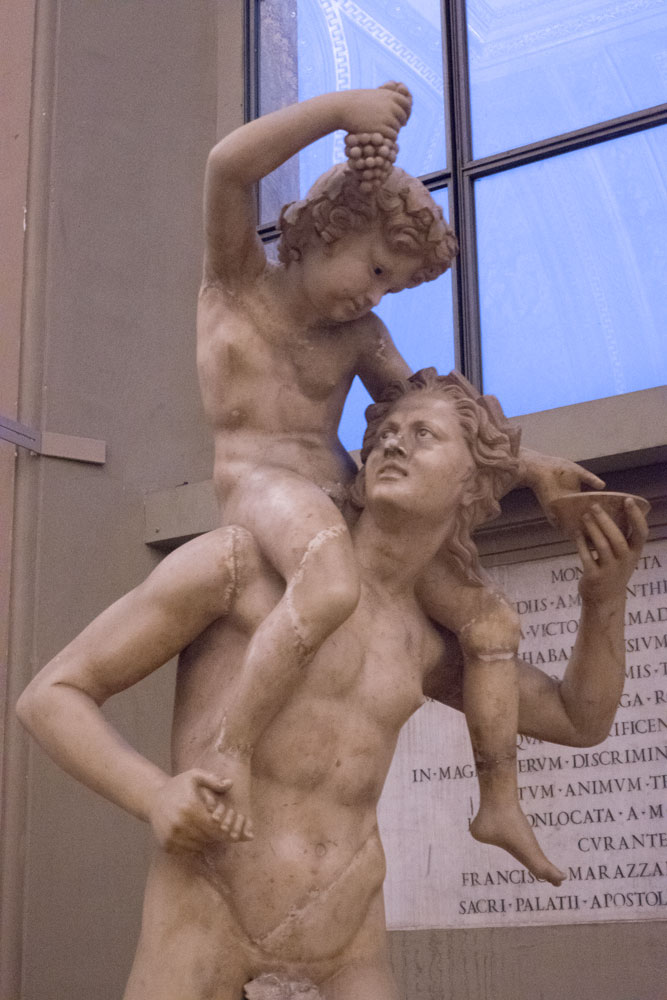
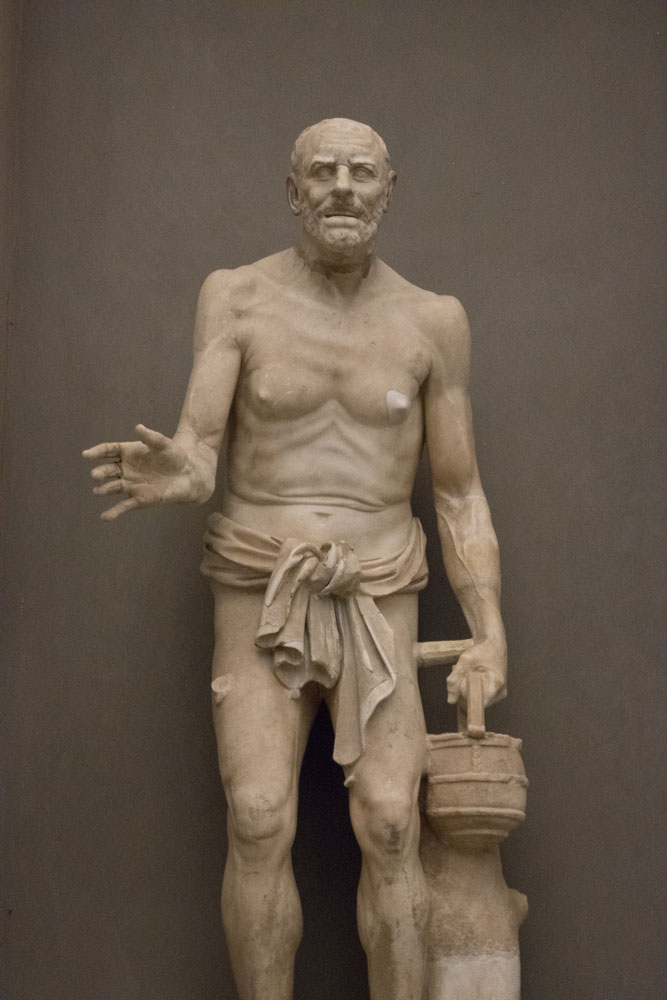
This is a detail of a tapestry designed by Raphael and woven in Belgium.
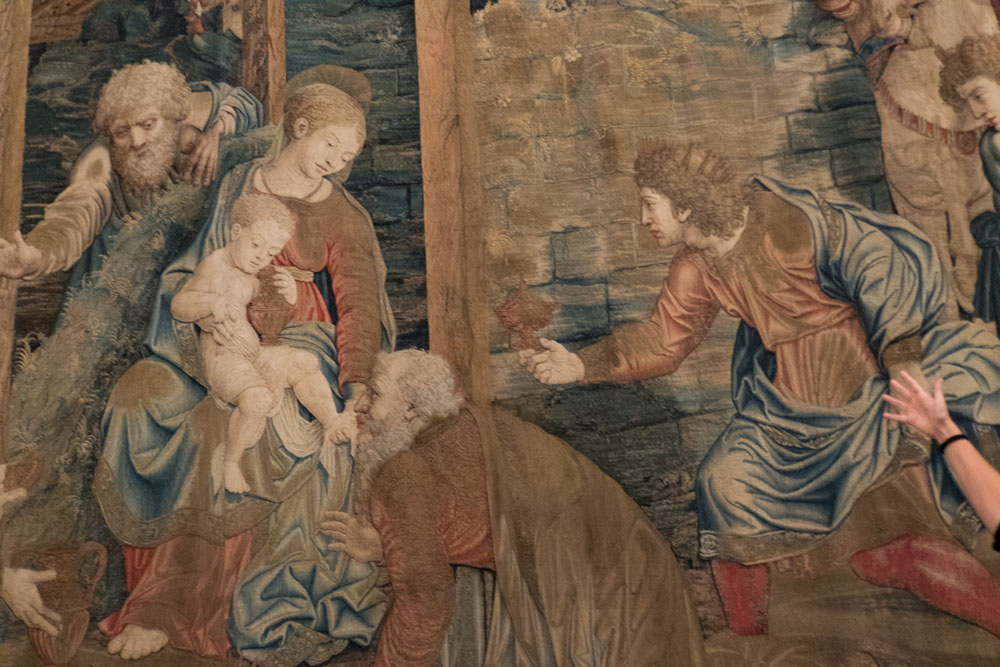
But it wasn't just the art. The building is also very impressive. Here's a hallway we walked down. There's art on the walls and on the ceiling and it just seems to go on forever.
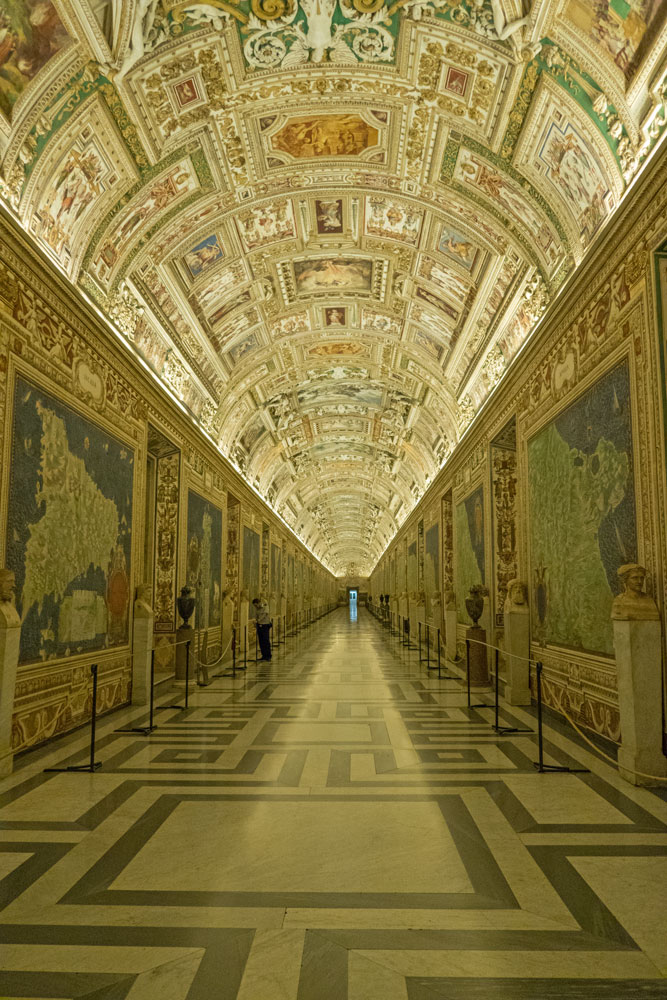
Here's a close up of one end of that long hall.
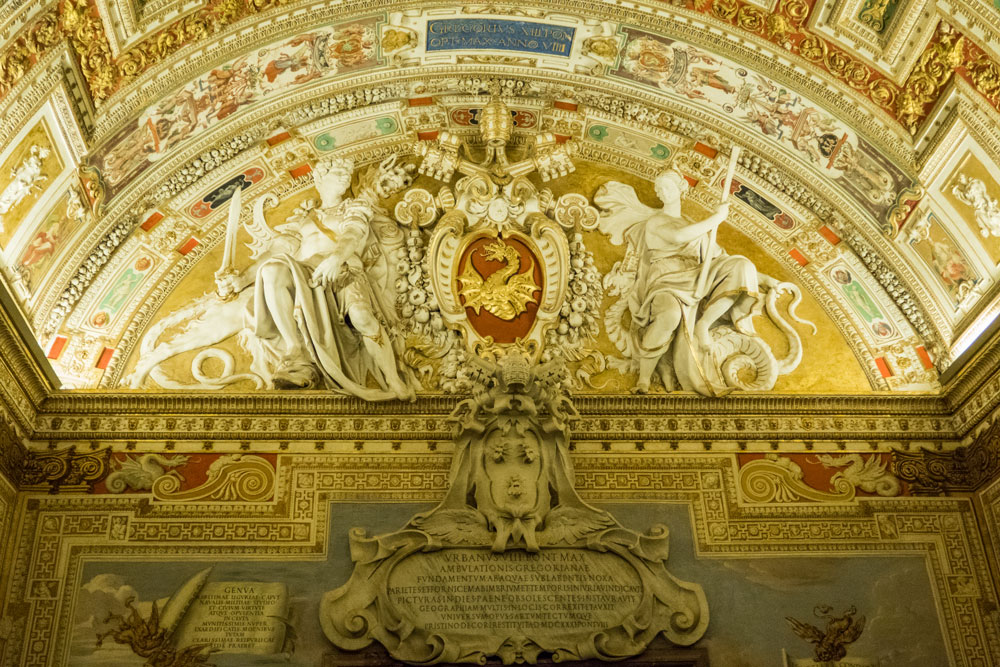
This is a fresco by Raphael. It was innovative for it's time, with the motion depicted, the expressions on the faces of the people, and their "action" postures.
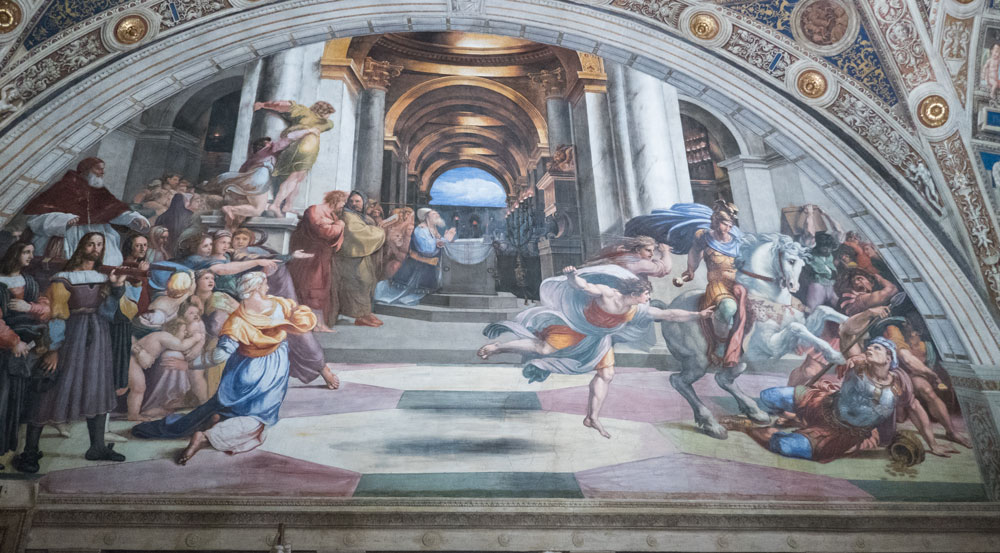
Next, we went into the Sistine Chapel where out tour guide spent quite a bit of time talking about the art on the walls and the ceiling. Michelangelo painted the ceiling and it's the most famous art in the chapel. We were not permitted to take pictures, even with available light, in the Sistine Chapel. But here's a picture of the ceiling taken from the web. The most famous image is the one in the middle, slightly to the right, where God is about to touch Adam's finger, essentially giving him life.
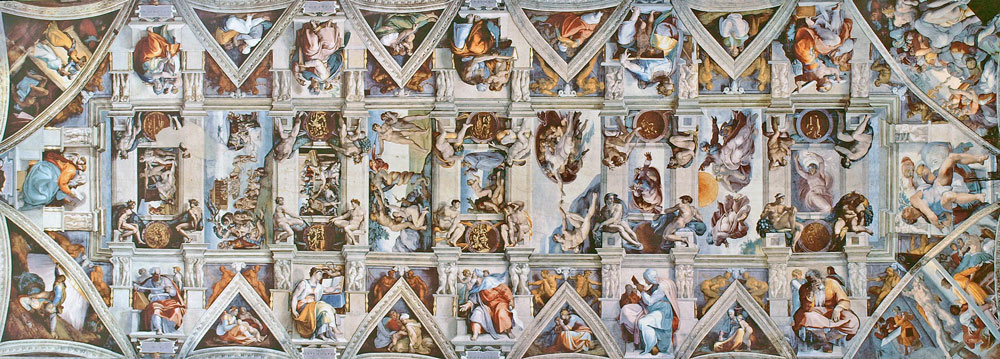
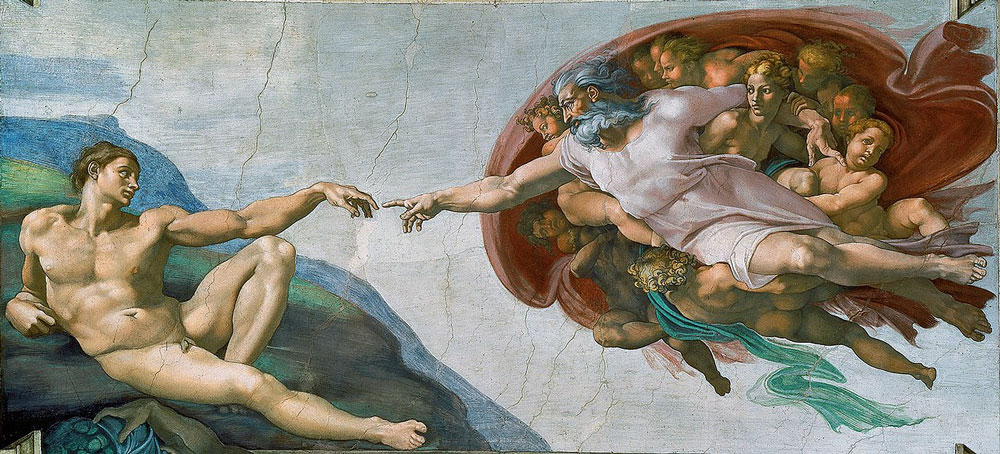
Eventually our time in the Vatican Museum and the Sistine Chapel came to an end and we exited the Vatican Museum. The exit itself was interesting. A double spiral ramp took us down two floors.
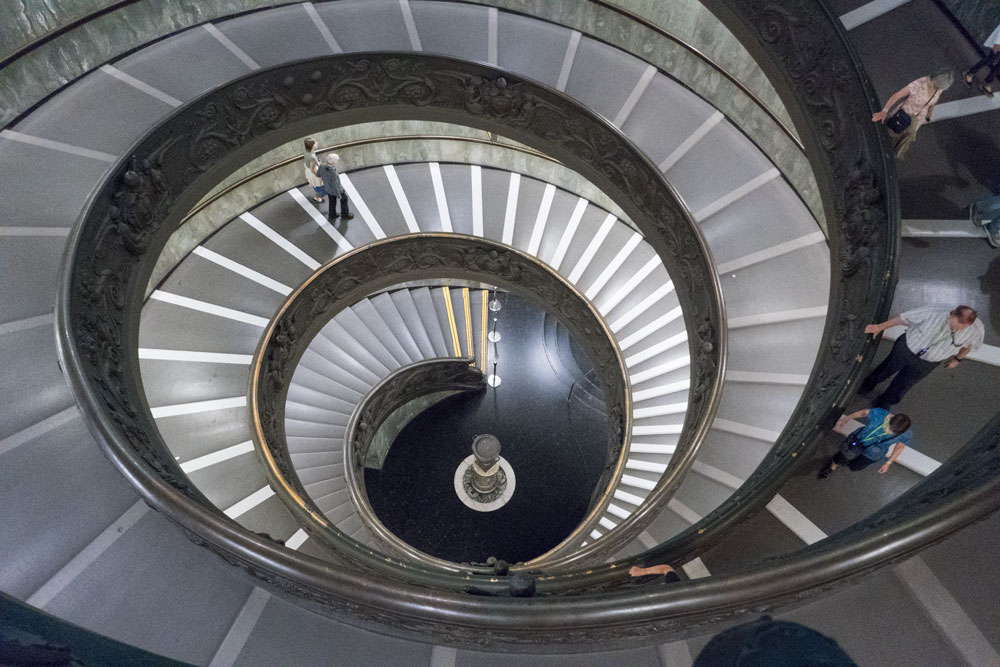
That concluded our very full day, and it was back to the hotel and to bed. Our luggage needs to be ready to go at 7:30 am.